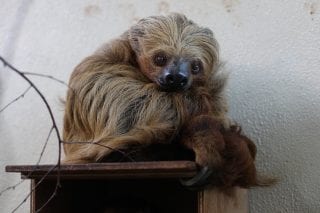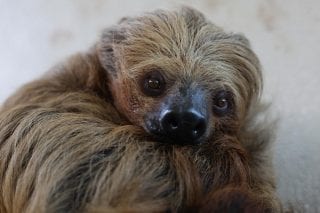Fun Facts
Why so slow?
Sloths have a four-part stomach that very slowly digests the tough leaves they eat, it can sometimes take up to a month for them to digest a meal. This means a sloth has very little energy left to move around making it one of the slowest moving animals in the world.
Slow Movers
They are so slow algae grows on them, helping to camouflage them from predators.
Fingers and Toes
All sloths actually have 3 toes. The two-toed sloth has two fingers, as well as three toes.
Sleepy Heads
Two-toed sloths sleep for 15-20 hours a day, even when awake they can remain motionless.
Giant Ancestors
Skeletons of now extinct species of sloth suggest some varieties used to be as large as elephants.



